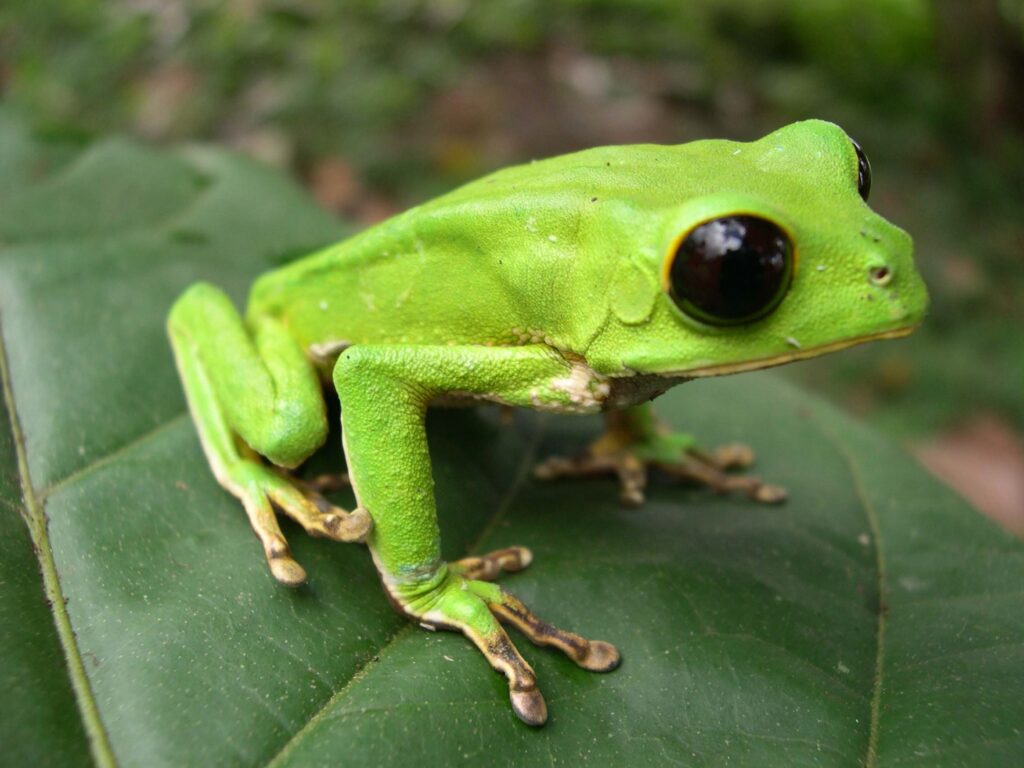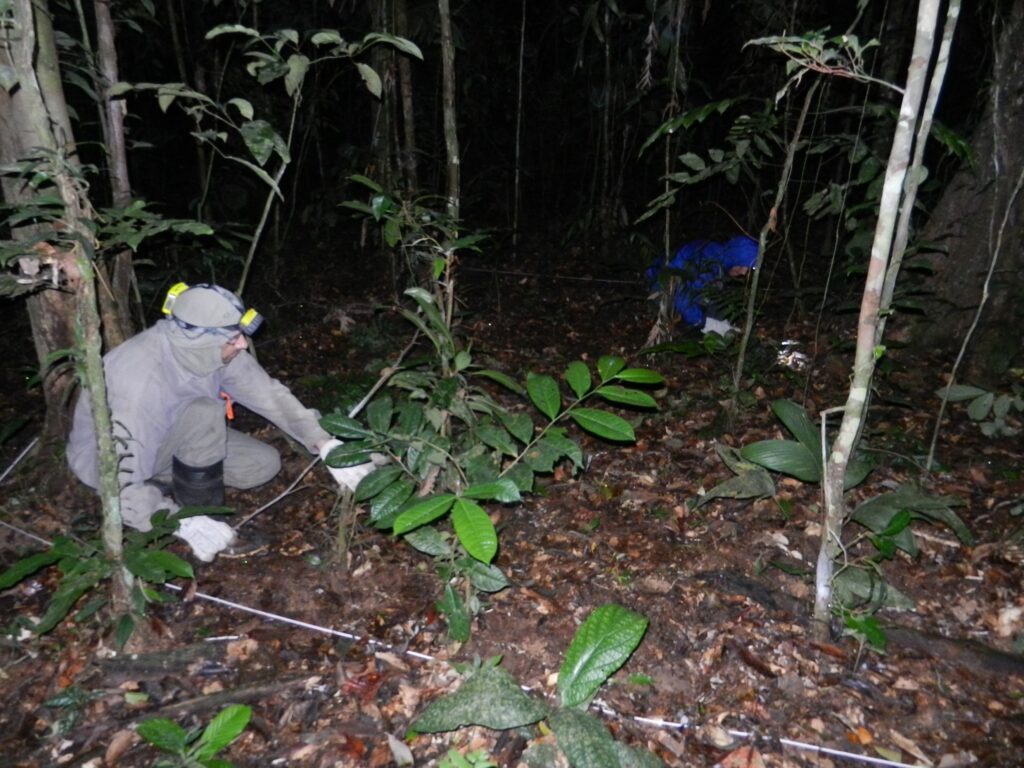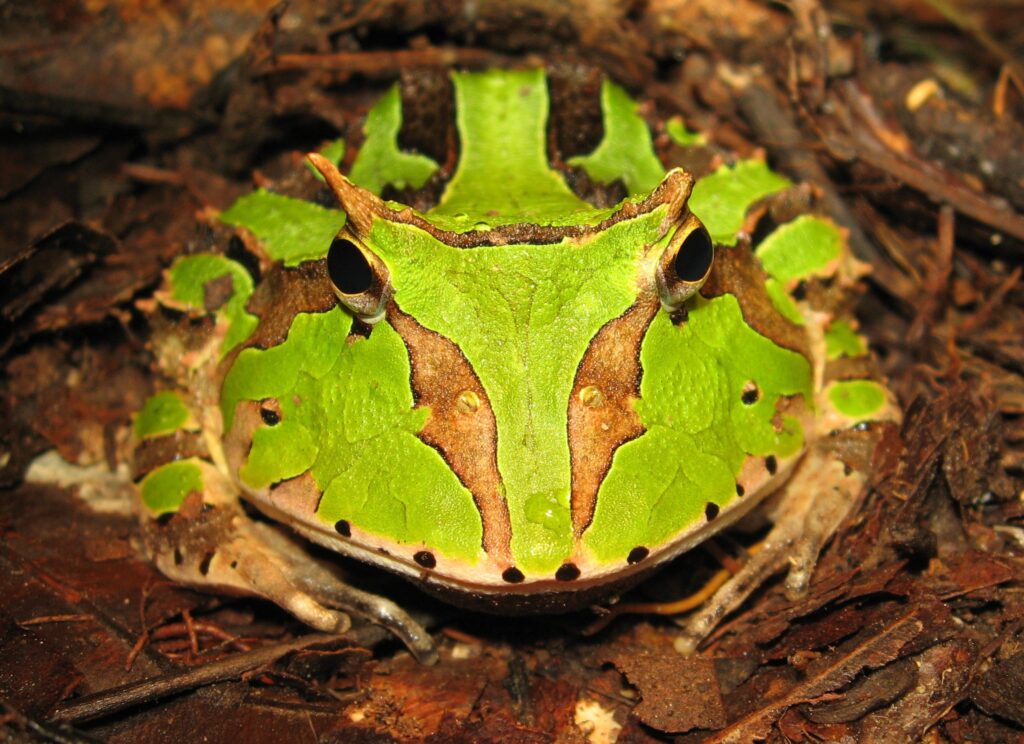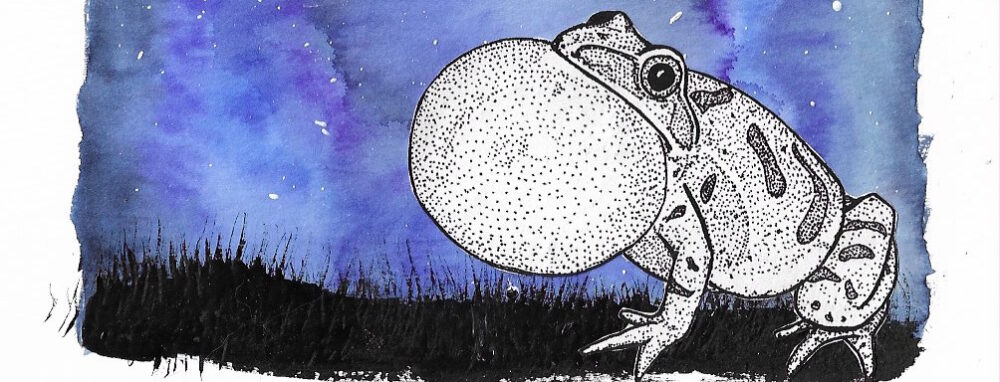By Gretta Stack

Rudolf von May grew up in Peru and was always curious about the diversity of organisms around him. His family took trips to the Amazon rainforest and he was amazed. Surrounded by diverse landscapes and people, he eventually discovered he wanted to be a scientist. Sadly, many of these beautiful places where he found his love of science are now threatened by climate change and may not be around forever. Von May has spent years studying thermal physiological traits in Amazonian frogs and how they could be affected by climate change.
Why Care?
Tropical rainforests are home to the most biodiverse plant and animal communities on earth. Climate change is threatening these tropical rainforest habitats and could cause some species to even go extinct. In the Amazon, increasing heat waves and extreme weather events are leading to intense droughts and fires. What will happen to these communities in the future? Which species will survive and which will go extinct, as global temperatures continue to rise? The story is more complex than it may seem.
I had the pleasure of talking with Rudolf von May over a phone interview to learn more about his research. As he states in his paper, there is an assumption that closely-related species that occupy the same niches will have similar responses to climate change. This seems to make sense at first. Frogs that are related and live the same types of habitats should have the same response to a changing climate, right? However, von May’s research shows that even closely-related species can have different tolerance levels to extreme hot and cold temperatures. Understanding how species respond to climate change can help us conserve biodiversity in the future.

A Study
Rudolf von May and collaborators conducted a study that focused on how frogs in the Amazon respond to average warming and cooling (Thermal physiological traits in tropical lowland amphibians: Vulnerability to climate warming and cooling, 2019). They studied 56 different species of Amazonian frogs between 2012 and 2017 at the Los Amigos Biological Station in the Madre de Dios region, Peru. They captured 384 individual frogs in the field and brought them to the lab to measure their heat and cold tolerance levels (critical thermal minimum/CTmin. and critical thermal maximum/CTmax.). They measured the thermal tolerance levels by placing frogs in a warm bath or a cold bath and measured their righting response. The righting response is the moment when a frog cannot right itself from being placed upside down for longer than 5 seconds. They also collected environmental temperature data using data loggers for two forest microhabitats (leaf litter and understory vegetation) in different forests where the frogs are found.

Results
They found that, in fact, there were a few trends in tolerances among frog families based on body size. For example, tree frogs and microhylid frogs tolerated warmer temperatures than other families. Frogs in the Strabomantidae family were found to be at the highest risk of thermal stress. “This finding is both significant and concerning at the same time, because this family of frogs has more than 700 species—which is about 10% of the number of described species of amphibians”, von May said. However, one third of the species in the study showed differences in tolerances between individuals within the same family, which shows that these thermal tolerance traits can be plastic and can change, even over an individual’s lifetime. This new research on heat and cold tolerance levels can help us predict which species will persist and which will suffer in a warmer climate in the future.
Good News
Luckily, there seems to be some good news from von May et al.’s findings. While some species will suffer dramatically with a 3°C increase in average temperature, many species have high thermal maximums and therefore, could be tolerant to climate warming. Von May et al. found that only about 4-5 % of the 56 lowland frog species they studied are really in trouble. This means that some lowland frog species, such as Phyllomedusa camba (pictured on page 1.), will be able to adapt as global temperatures increase.
Looking Towards the Future
With the looming threat of climate change, it is important that conservation efforts are strategic. For example, when designating a protected area, the thermal tolerance traits of the species that live there must be studied to determine which populations are most vulnerable. The question is, if closely-related species respond to climate change differently, how do we go about conserving and protecting a specific species? Von May believes that to protect amphibians in general, the best thing to do is protect habitat. He said that disturbed habitats can only support a small subset of species. Meaning that habitat degradation, regardless of climate change, can pose a serious threat to amphibians.

In addition to habitat protection, to protect biodiversity in the Amazon and around the globe, more research and better data are needed. According to von May, the weather data needed to study temperature tolerance can be limited. The data used for research are from weather stations, which are usually many meters above the ground. To study lowland frog species, the temperature at ground level must be measured, so it is best to collect the data with data loggers or manually on the ground instead of using data from weather stations. Even when weather station data are relevant, there are still gaps in the data because there are places in the Amazon and other places on Earth that are so remote that they lack weather stations.
With more research and better data, we can predict which species are most vulnerable to climate change and understand how we can best protect them. We cannot let any of these beautiful, little creatures go extinct.

Interested in reading more? Find the article here.
